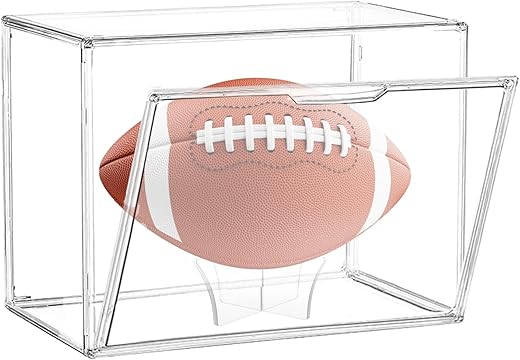









Ultimate Guide to Protection Displays: Keeping Your Devices Safe
In a world where technology reigns supreme, our gadgets have become an integral part of our daily lives. From smartphones to tablets and laptops, the need to protect these devices is more crucial than ever. Enter the protection display—a simple yet effective solution to safeguard your screens from scratches, cracks, and those unexpected moments that could lead to catastrophic damage. In this article, we’ll explore what protection displays are, their benefits, and how to choose the right one for your device.
What is a Protection Display?
A protection display refers to various screen protectors designed to shield your device’s screen from physical damage. Think of it as a superhero cape for your gadgets, standing between your precious device and the perils of everyday life. Made from materials like tempered glass or plastic film, these protectors absorb the impact of drops and resist scratches, ensuring your screen remains pristine.
Why Do You Need a Protection Display?
Imagine this: you’re at a coffee shop, sipping your latte, when your phone slips from your hand and crashes onto the floor. What’s your first thought? If you’re like most people, it’s a mix of horror and dread, envisioning a shattered screen. But what if you had a robust protection display? That minor mishap could leave your device unscathed.
Here are some compelling reasons to invest in a protection display:
1. **Prevention of Damage**: The primary benefit is clear—protection displays prevent scratches and cracks.
2. **Enhanced Resale Value**: A well-maintained screen can significantly boost the resale value of your device. Would you buy a phone with a shattered screen? Probably not.
3. **Improved User Experience**: A smooth, clear screen enhances touch sensitivity, making your interactions with your device more enjoyable.
4. **Cost-Effective**: Repairing a cracked screen can cost significantly more than investing in a quality protection display. Why take the chance?
Types of Protection Displays
When it comes to protection displays, you’ll find several options, each with its unique features. Let’s break them down:
1. Tempered Glass Screen Protectors
Tempered glass protectors are the heavyweight champions of screen protection. They are made from multiple layers of glass, bonded together under high heat, making them resistant to shattering and scratches. If your device takes a tumble, a tempered glass protector can absorb the impact and keep your screen intact. Think of it as a shield that stands firm against the forces of gravity!
2. Plastic Film Protectors
These are the lightweight contenders. Typically thinner and more flexible than tempered glass, plastic film protectors are easier to apply and can often be cut to fit. While they may not offer the same level of impact resistance as glass, they do a fair job of preventing scratches. They’re ideal for those who prioritize a slim profile over heavy-duty protection.
3. Liquid Screen Protectors
Liquid screen protectors are a newer innovation, composed of a liquid solution that bonds to the screen. They provide a layer of protection that’s nearly invisible and doesn’t alter the device’s design. However, while they can help resist scratches, they may not be as effective against impacts. Consider them a gentle raincoat for your screen—great for light showers, but not a substitute for a full umbrella.
How to Choose the Right Protection Display
With so many options available, how do you choose the best protection display for your device? Here are some factors to consider:
1. **Device Compatibility**: Ensure that the protector is designed specifically for your device model. A poorly fitted protector can do more harm than good.
2. **Material**: Decide between tempered glass, plastic, or liquid based on your lifestyle. If you frequently drop your device, opt for glass. If you prefer something lightweight, consider plastic.
3. **Installation Process**: Some protectors come with installation kits, while others require a DIY approach. If you’re not confident in your skills, look for those with easy application processes.
4. **Price**: While it’s tempting to go for the cheapest option, remember that quality often comes at a premium. Consider it an investment in your device’s longevity.
Conclusion
In an era where our devices are constantly at risk of damage, investing in a protection display is a no-brainer. Whether you choose tempered glass, plastic film, or a liquid protector, the peace of mind that comes from knowing your screen is safe is invaluable. After all, it’s better to be safe than sorry—especially when it comes to your beloved gadgets.
FAQs
1. How do I install a screen protector?
Installing a screen protector varies by type. Tempered glass often comes with an easy application guide, while plastic film might require careful alignment. Always clean your screen thoroughly before applying and follow the instructions provided.
2. Can I remove a screen protector?
Yes, you can remove a screen protector. Gently lift a corner with a fingernail or a plastic tool to avoid damaging the screen. If it’s a liquid protector, follow the manufacturer’s removal instructions.
3. How often should I replace my screen protector?
It’s advisable to replace your screen protector when you notice significant scratches or cracks. Regularly inspect it for any signs of wear and tear, as a compromised protector won’t provide adequate protection.
